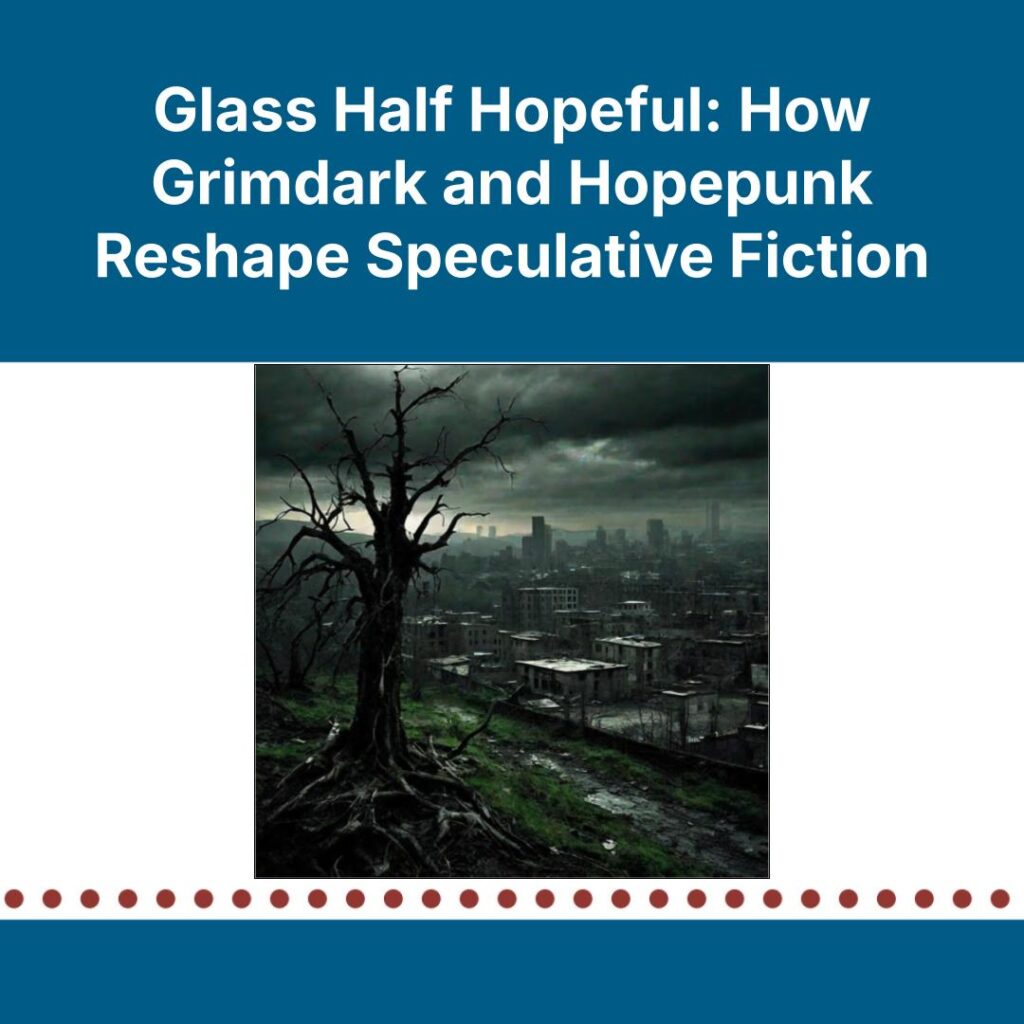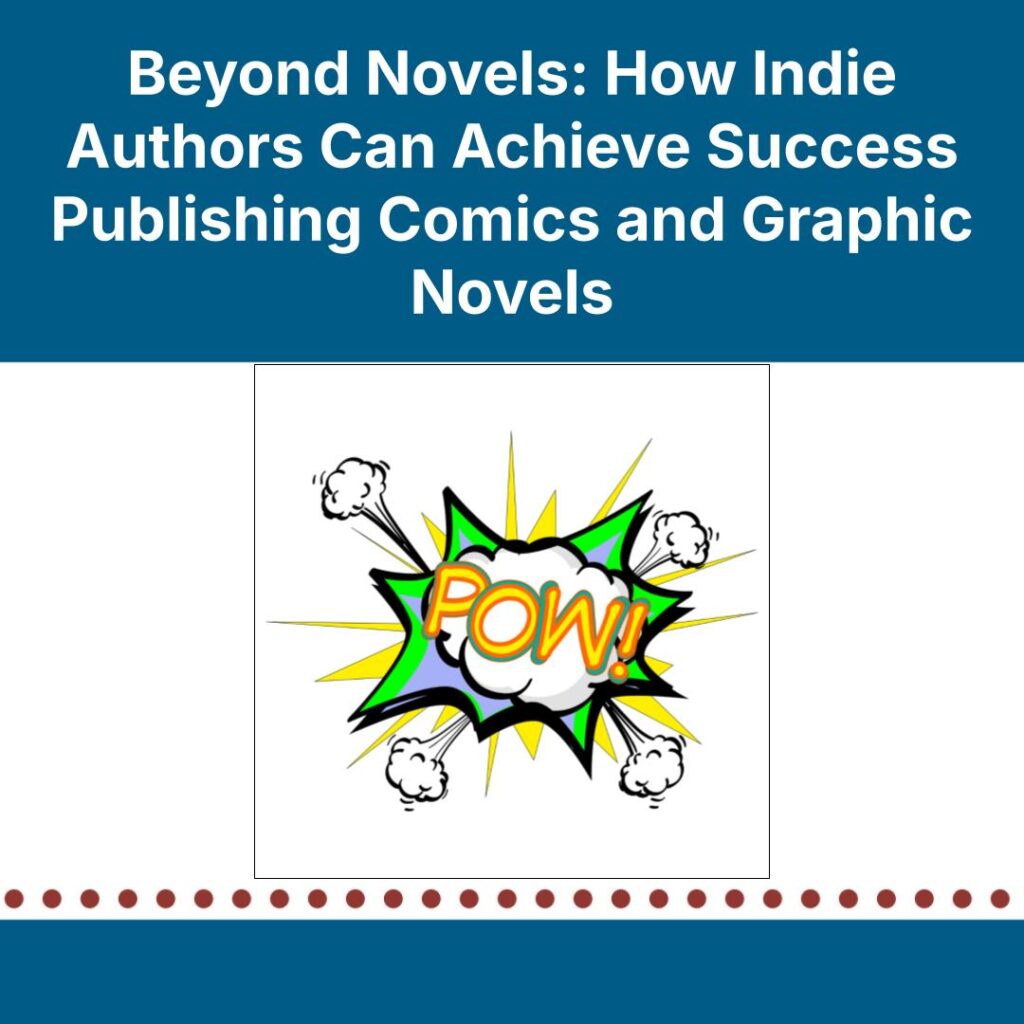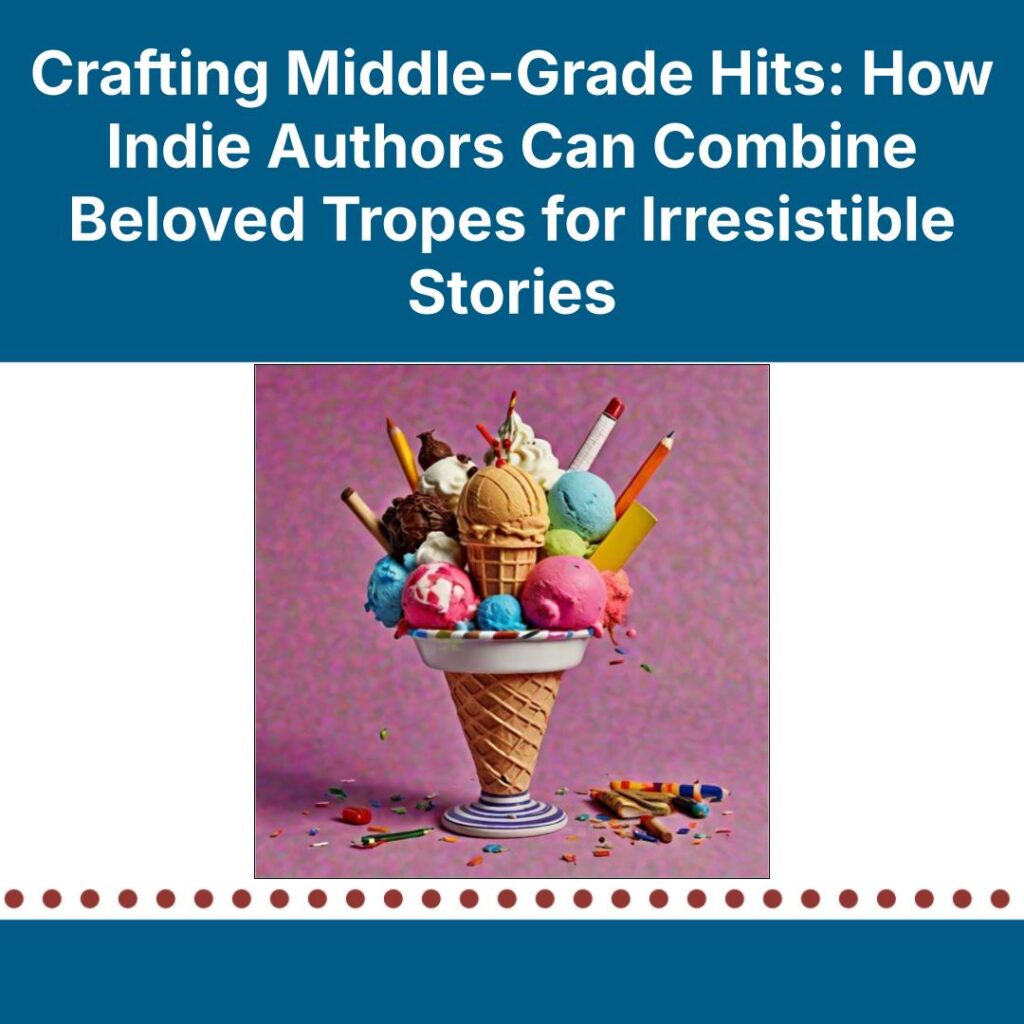When the world is falling down around your characters, how do they react?
Whether you write Fantasy, Post-Apocalypse, or some other offshoot of the Speculative Fiction category, your answer may determine more than the character arc you’ve created in your story. If your writing encapsulates real-world issues and dystopian elements, their response to the story world could also sort your book into one of two subgenres: Grimdark or Hopepunk.
Grimdark and Hopepunk are often framed as two sides of the same coin—Hopepunk’s origins even stem from a suggestion that it be made an opposite to Grimdark. But in practice, the two are more similar than they are different. For authors, Grimdark and Hopepunk are a case of similar worlds but different perspectives, similar tropes but different approaches to them—and understanding those similarities as well as those differences is essential for attracting the right readers to your books.
Grimdark
The concept of Grimdark came about slowly in the Fantasy world, with plenty of stories being shaped by gritty characters and grim worlds before the subgenre existed. Grimdark Magazine credits George R. R. Martin’s Game of Thrones series with launching the popularity in Epic Fantasy of “more realistic” fantasy worlds, after the Sword-and-Sorcery subgenre shifted away from darker stories and toward more lighthearted and uplifting adventures. The name for the subgenre came from the tagline for the tabletop role-playing game Warhammer 40,000: “In the grim darkness of the far future, there is only war.”
The tagline that inspired the Grimdark name is also an apt description of the stories it describes. In Grimdark stories, the world is fantastical, but it is also fantastically bleak, and characters are often gritty, violent, and beaten down, blurring the line between right and wrong as they fight to survive. Emily Wenstrom, in an article for Book Riot, sums it up as “dark, broken worlds, with dark, broken characters.”
Although the term is used primarily for Fantasy, there is some debate about whether stories can be Grimdark without involving a fantasy setting. Generally, “the term is not restricted to fantasy but rather can apply to any form of speculative fiction,” according to Grimdark Magazine, including Science Fiction, Horror, Historical Fiction, and Dystopian. That said, Grimdark stories are not entirely hopeless; instead, writes Grimdark Magazine author Aaron S. Jones, the subgenre’s darker themes should make each glimmer of hope shine that much brighter.
Hopepunk
Where Grimdark came about after years of genre evolution, the concept of Hopepunk came about from a two-sentence Tumblr post. In July 2017, author Alexandra Rowland wrote, “The opposite of grimdark is hopepunk. Pass it on.”
More than sixty-one thousand notes later, it has been.
Since her initial post, Rowland’s idea has sometimes been controversial. Some Grimdark readers argued an opposite subgenre wasn’t necessary and watered down the qualities that made Grimdark unique; others made comparisons to another subgenre, Noblebright, which focuses on heroism and the belief that good will triumph over evil. After her initial post’s popularity, Rowland explained her concept for Hopepunk further on her blog. Noblebright stories focus on the idea that good will win the fight, she wrote, but Hopepunk stories focus on the fight itself.
Hopepunk stories start in the same kinds of worlds as Grimdark stories, but they approach survival from a different perspective. Characters are soft and kind when the world around them is not, and they fight for collective change rather than survival, according to a 2018 article on the genre in Vox. In an interview with Rob Hopkins, Rowland posed a different comparison: Hopepunk is not a “glass half full” mentality, nor is it the “glass half empty” mindset of Grimdark. Rather, stories in this subgenre say, “There’s water in the glass, and that’s important.”
The Choice for Authors
Grimdark and Hopepunk stories both have established audiences and well-known titles to their name: for Grimdark, titles like The Poppy War by R. F. Kuang and indie author Richard Nell’s Ash and Sand series, and for Hopepunk, Becky Chambers’s A Psalm for the Wild-Built—as well as Rowland’s own novels. When marketing Speculative Fiction, it’s up to authors to decide which themes match their story and will engage their readers the most.
Tropes
Still debating which genre is right for you? Grimdark and Hopepunk share plenty of dark tropes, but a few key story elements may shed some light on where your story lies.
- Apocalyptic Setting: Even within Fantasy settings, both Grimdark and Hopepunk stories often feature world-ending catastrophes and focus on characters’ struggle to survive.
- Anything that Can Go Wrong Will Go Wrong: In Grimdark and in Hopepunk, the world is bleak, gritty, and unforgiving. Plans go awry, plots twist in the villain’s favor, and characters must deal with an unrelenting set of challenges as their story continues.
- Corrupt Power: Often, either the Grimdark or Hopepunk stories are driven by a corrupt individual or ruling class, be they political or mythical. Protagonists in both stories often fall victim to this corruption, and in Hopepunk, must fight against the injustice—it is considered “punk,” after all.
- Sarcastic Antihero vs. Kind Hero: Most often, Grimdark stories will feature a sarcastic, abrasive antihero, whose cynicism is because of the world they live in, and Hopepunk protagonists will remain kind and optimistic in spite of the world they face.
- Survival at a Cost, or Survival Against All Odds: Grimdark and Hopepunk stories are both, at their core, about survival, but while Grimdark stories emphasize how a character’s dark choices allow them to survive, Hopepunk stories focus on survival as an uplifting, inspiring message. Regardless, both stories frame survival as an act of resistance.
- Always Keep Fighting: Protagonists in both Hopepunk and Grimdark are tenacious and unwilling to give up the fight. Whether motivated by a will to survive or a chance to help others do the same, when beaten down, they will always try to stand up again.
Nicole Schroeder
Nicole Schroeder is a storyteller at heart. As the editor in chief of Indie Author Magazine, she brings nearly a decade of journalism and editorial experience to the publication, delighting in any opportunity to tell true stories and help others do the same. She holds a bachelor’s degree from the Missouri School of Journalism and minors in English and Spanish. Her previous work includes editorial roles at local publications, and she’s helped edit and produce numerous fiction and nonfiction books, including a Holocaust survivor’s memoir, alongside independent publishers. Her own creative writing has been published in national literary magazines. When she’s not at her writing desk, Nicole is usually in the saddle, cuddling her guinea pigs, or spending time with family. She loves any excuse to talk about Marvel movies and considers National Novel Writing Month its own holiday.










